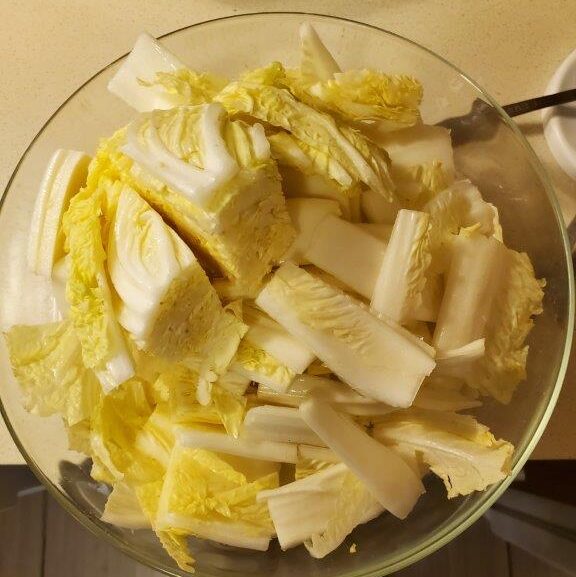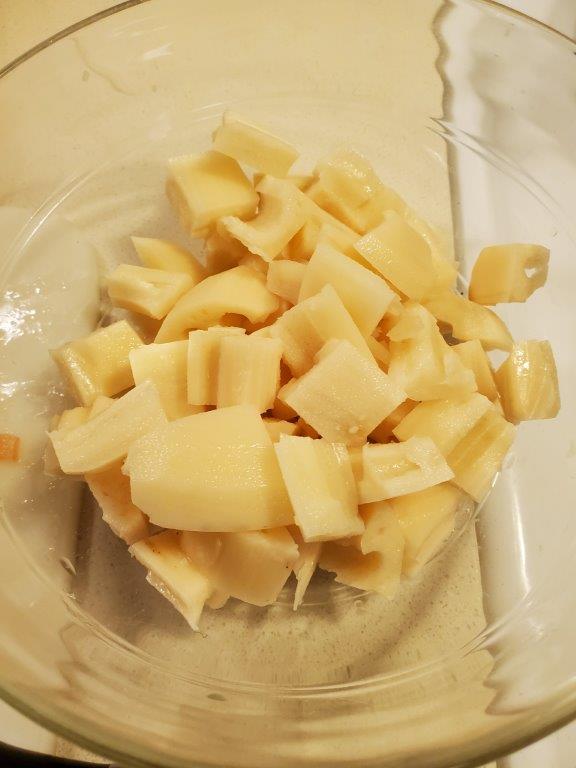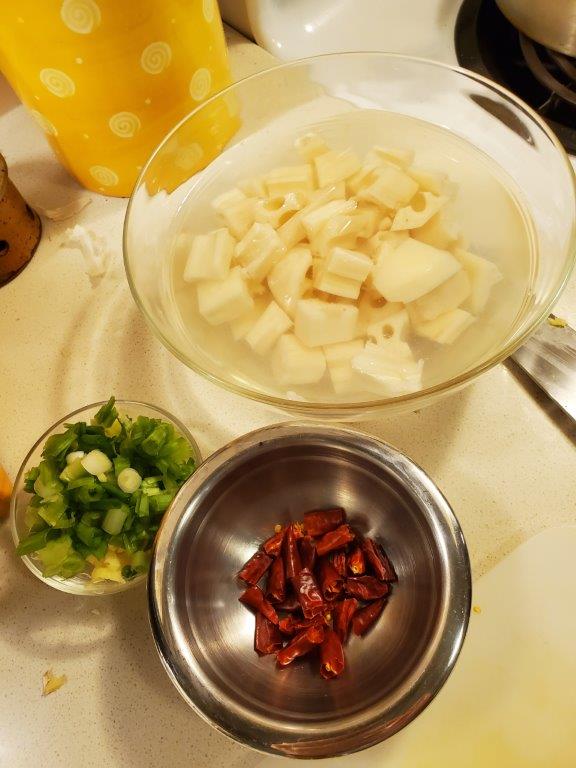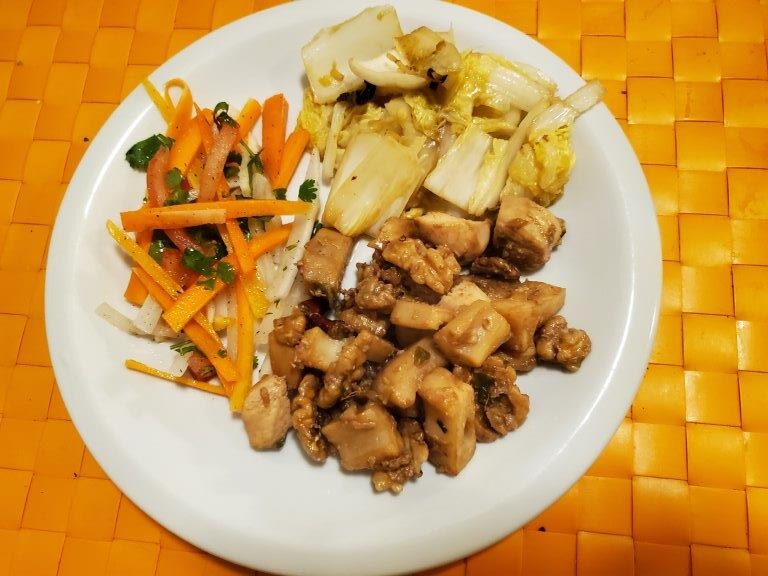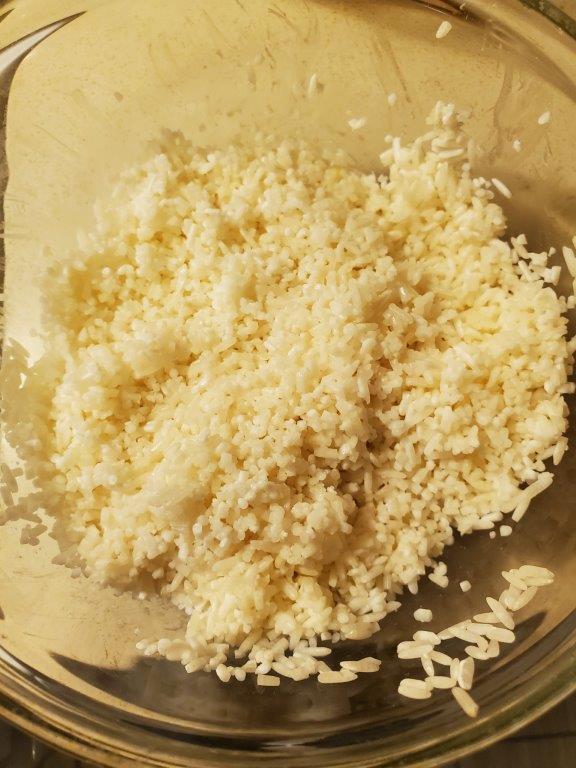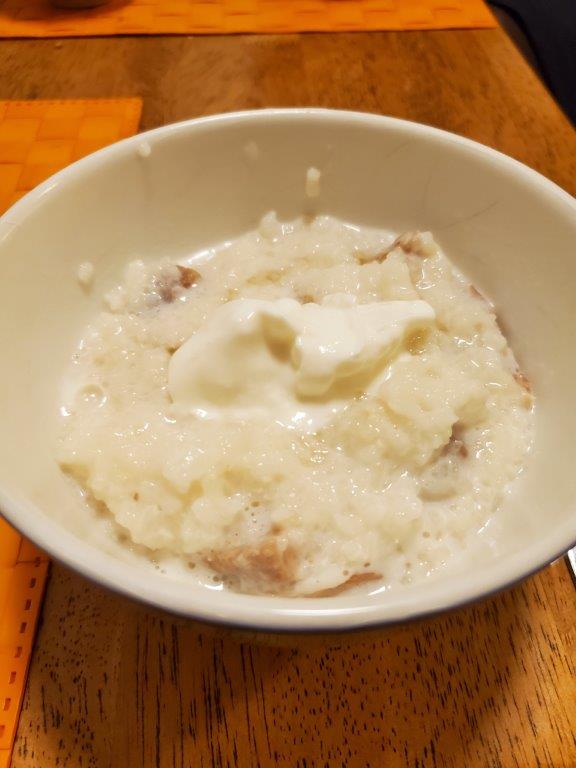Well, we’ve come to our final international meal for China. And the region for this one could accurately be described as “Misc.” Carolyn Phillips, our guide though this part of the world, combines Tibet, Mongolia, and everything in between, including the ancient capital of Chang An (now Xi’an) in her final chapter. Confusingly, we also get provinces whose Romanizations are Shanxi and Shaanxi. Additionally, a huge stretch of the silk road passes through this chunk of China.
So where shall we begin? Why not with a salad? I did a crap job photographing this one until the final product, so here’s a picture of a radish:
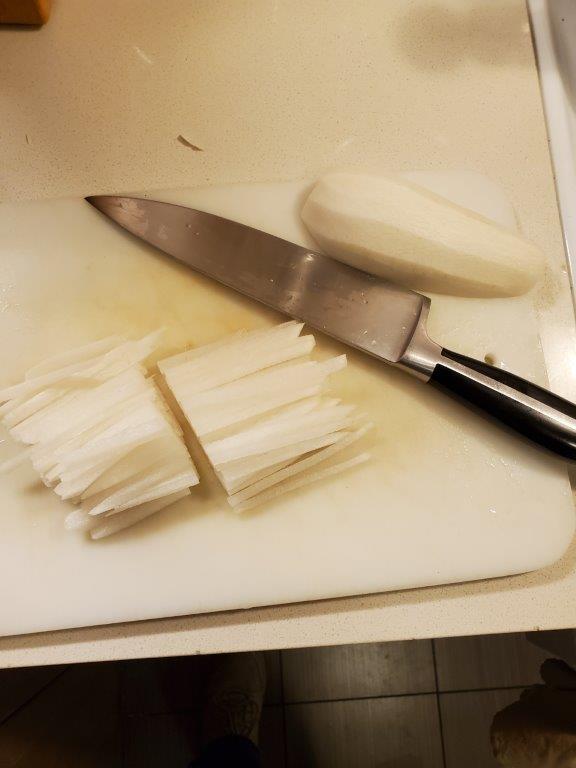
In addition to the radish, the salad includes just a few ingredients: carrots, a tomato, lemon juice, cilantro, and salt and pepper. Nothing fancy, but this Tibetan dish makes a good compliment to the heavier seasoning on the other two.
Our second vegetable is stir fried Napa cabbage, with a spicy dressing including chilies and black vinegar. One cabbage makes a LOT of cabbage:
A word about black vinegar – this is an ingredient we’ve only started playing with since moving to Vancouver, but it is seriously great. Get some if you can, and use it anywhere you want your vinegar to have a bit more personality than cider or red wine vinegar.
OK, so on to the main dish: Chicken with Walnuts and Lotus Roots. You may remember that we made Lotus Root Chips a few weeks ago, which were to all intents and purposes, potato chips. (And equally as tasty!) For this recipe, we’re going to cut the lotus roots more like you would for a curry or stir fry, into chunks, rather than slices.
Next, we’re going to marinate our chicken in rice wine, egg white, and cornstarch. Gloppy!
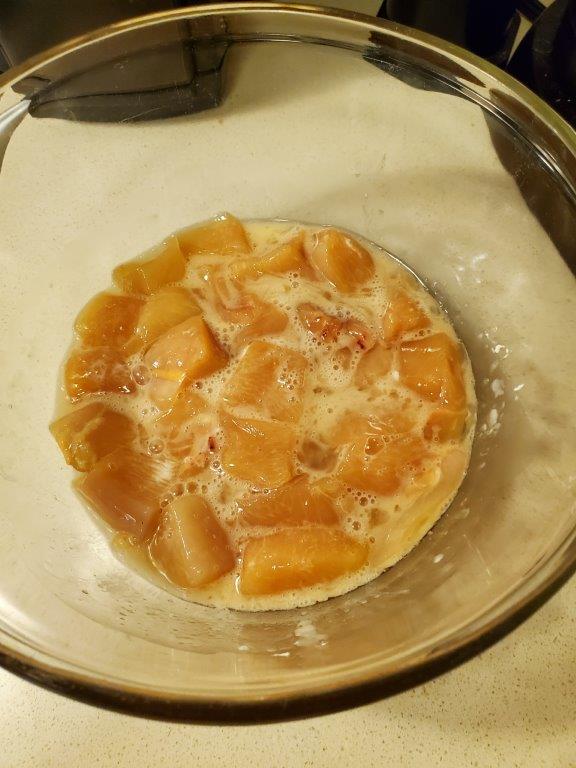
To finish our mise en place, we need chilis, ginger, garlic, green onions, and walnuts. (not pictured)
This was another dish where the actual cooking was so fast that it wasn’t really possible to take pictures. You fry each ingredient one at a time, dump it out into a work bowl, and then fry the next one in the same oil. Finally, you slap them all back into the wok together and pour on some sweet wheat paste. The final product is brown.
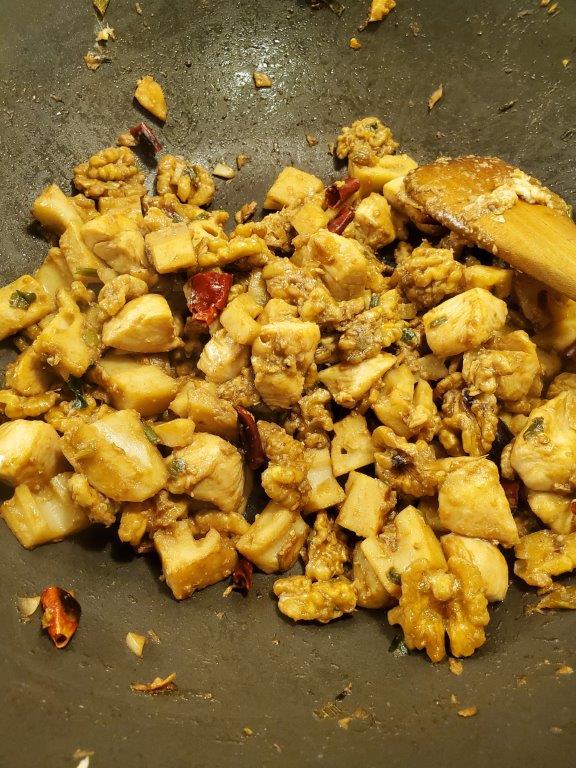
But don’t let the color fool you – this is a FANTASTIC dish! The textural context between the nuts, lotus roots, and chicken was super interesting, and the chilies kicked the heat up to a nice punchy level. This is another recipe that I suspect will get revisited in the future.
Here’s the full spread:
There were no duds on this plate. The cabbage was sour and spicy, the salad was crisp and refreshing, and we inhaled the chicken dish, it was so good. And you’re in luck, because Phillips has posted all the recipes but the salad online, so I’ll link at the bottom.
What about dessert? Well, we had originally picked out a recipe involving silver ear fungus and some more Osmanthus blossom syrup from last week, but when I went to make the shopping list the night before, I ran into this direction: “Begin preparing this dish four days before you intend to serve it.”
Oops.
The other two desserts in the cookbook involved deep frying, and we had done enough deep frying recently, so off to the internet! We found a tasty looking rice pudding recipe from Tibet. It called for “broken” rice, but since the Chinese supermarket didn’t have any, we just took some regular rice, soaked it, and then mushed it up.
Rice pudding is one of those dishes that turns up all over the world – it’s simple, tasty, and can be infinitely varied. This Tibetan variant uses dried apples (trust me, they’re in there), is sweetened with honey, and in a pretty great revelation, is served with a dollop of yogurt on top.
The tartness of the yogurt really offset the sweetness of the pudding and the apples nicely. With the leftovers, we may try some vanilla yogurt or cinnamon on top as well.
So that finishes our trek though China! We’ll probably return to one meal per country after this – we were unlikely to EVER finish this project, but doing this much granularity is definitely going to be reserved for special occasions. (Oh, hi India, didn’t see you there…) We need to express our thanks again to the author of “All Under Heaven”, Carolyn Phillips, for providing us with a framework to hang these meals on.
Next time, there are surprisingly no “Ci” countries, so we’re off to Colombia!
Recipes:
Vegetable Confetti Salad (not quite the version we used, but darn close)
Golden Edged Cabbage
Chicken with Walnuts and Lotus Root
Tibetan Rice Pudding

